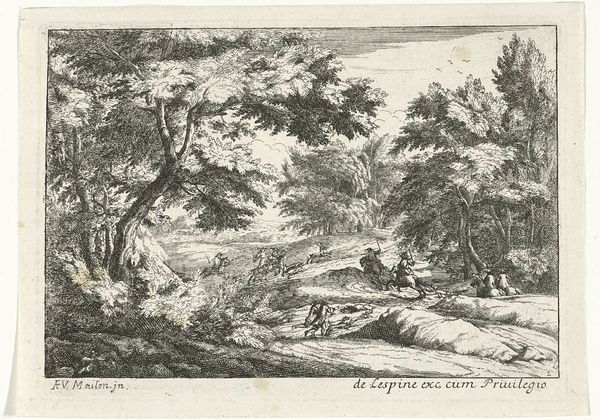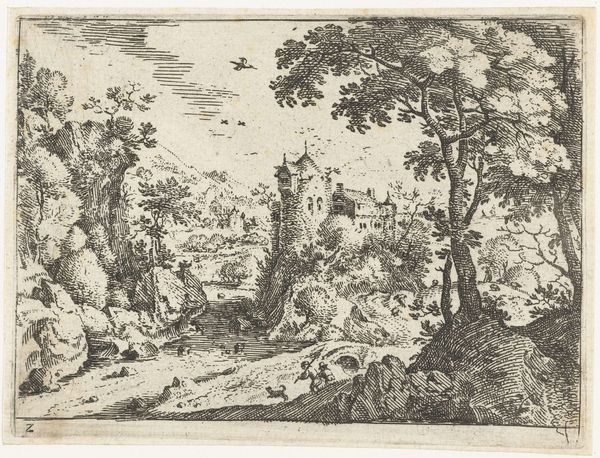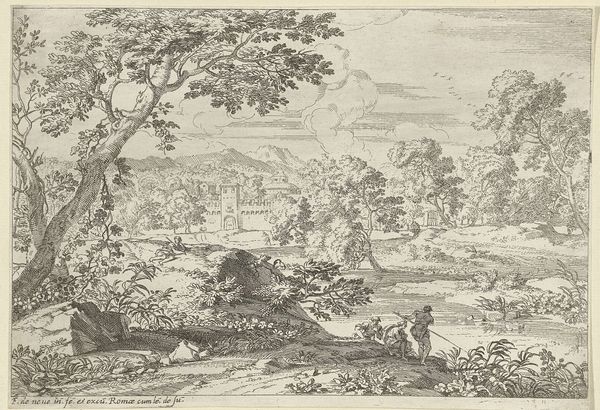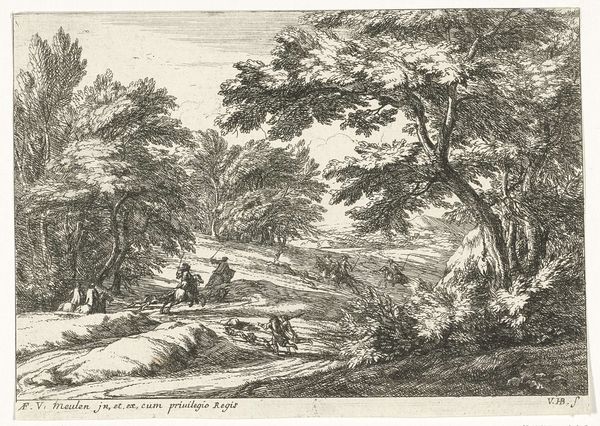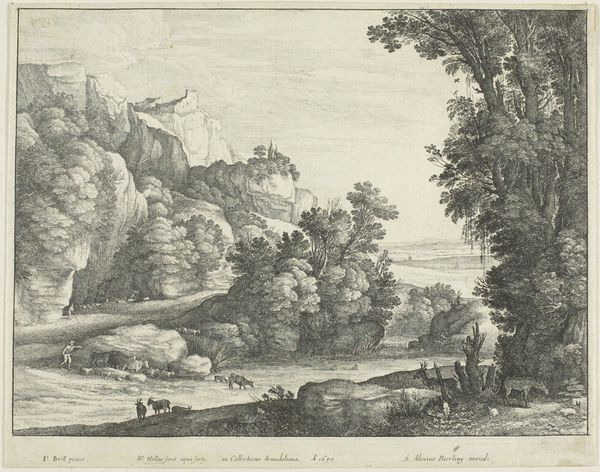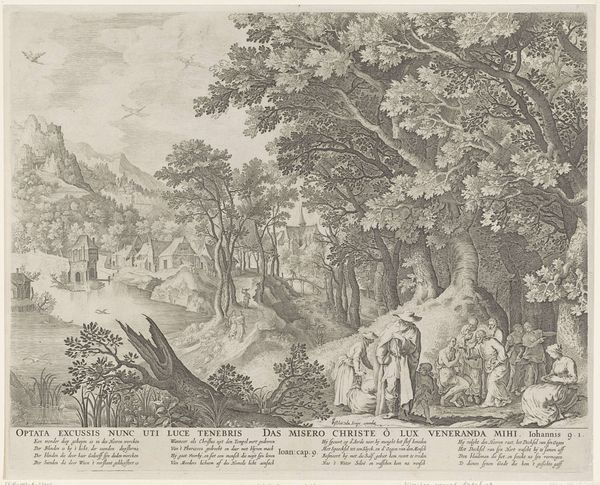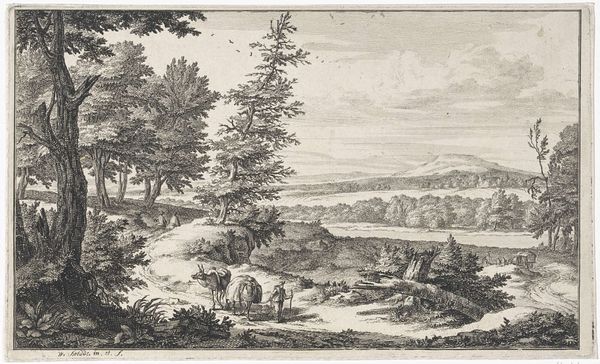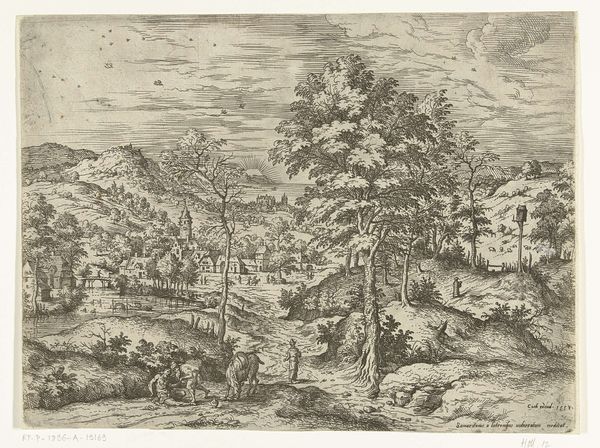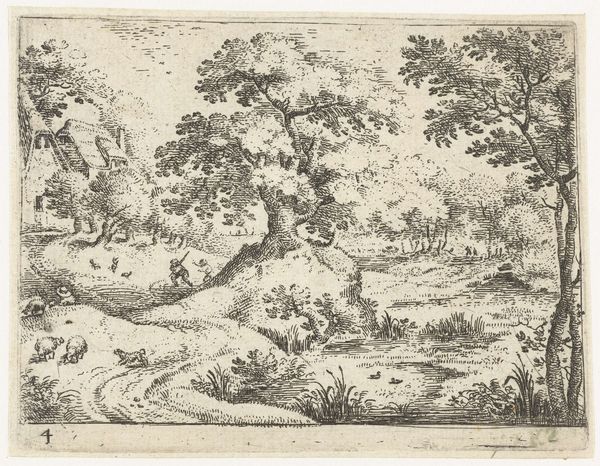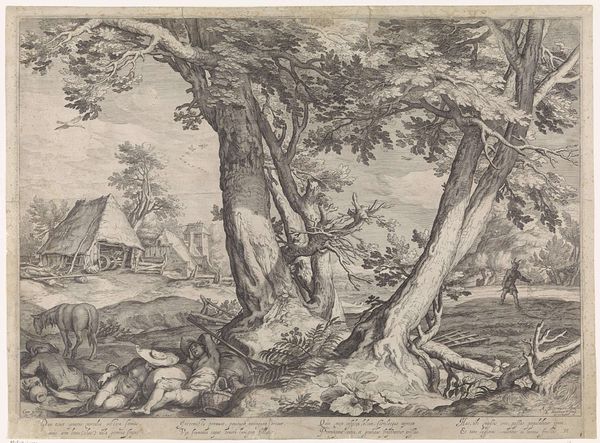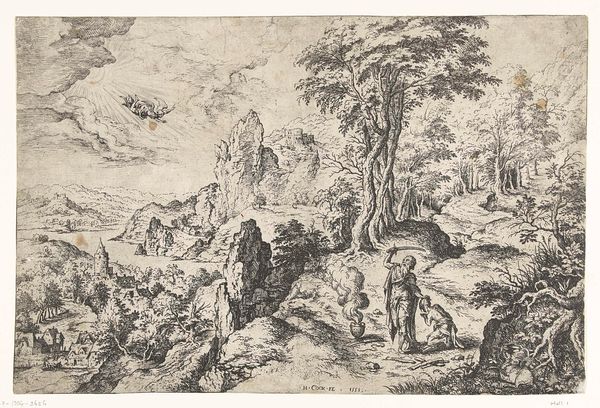
print, etching, engraving
#
dutch-golden-age
# print
#
etching
#
old engraving style
#
landscape
#
figuration
#
genre-painting
#
engraving
#
realism
Dimensions: height 124 mm, width 172 mm
Copyright: Rijks Museum: Open Domain
Curator: This is “Landschap met vee en figuren,” or "Landscape with Cattle and Figures" by Jan van Huchtenburg, created sometime between 1675 and 1696. It’s an etching and engraving. What strikes you about it? Editor: Immediately, I’m drawn to the texture. It’s all line work, obviously, but there’s such a density to the trees. You can almost feel the breeze rustling through the leaves. The materiality is deceptive; it suggests weight through what is ultimately an ephemeral technique. Curator: Indeed, that density adds to the thematic resonance. The landscape serves as a backdrop, but the figures—both human and animal—populate it, grounding it in everyday life. There’s a sense of the pastoral, a quiet harmony between humans and nature, a sort of pre-industrial idyll. Editor: But it also speaks to ownership, right? The figures are tending livestock, shaping the land to their needs. The very act of etching and engraving this scene – a process of material transformation - underscores this relationship of human intervention within, not just observation of, nature. The creation and distribution of these prints – how many copies were made? How were they used and circulated? These things all form the work. Curator: That's a valid point. Though idyllic, the landscape is simultaneously being utilized, managed. Consider the figures in the lower right—they could be read as contemporary witnesses, observing both the scene and perhaps our own gaze upon it. The scale adds a feeling of immediacy despite being created so long ago. It acts almost like a dream of this harmony, inviting a cultural memory of simpler times. Editor: That sense of witnessing feels significant considering printmaking's role in disseminating ideas at the time. Each impression is both an artwork and a tool—think of the labor that goes into creating even a single etching plate, the careful application of acid… It highlights how landscapes became accessible through commodification. Curator: The technique certainly speaks to the value that the people of that era placed on it and landscapes of that era represent to the viewers that the work holds today. Editor: I come away thinking about value – material and representational, equally valid but very distinct. Curator: Absolutely; it reveals just how much history a single image can hold.
Comments
No comments
Be the first to comment and join the conversation on the ultimate creative platform.
